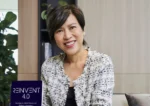In a workplace shaped by hybrid expectations and digital fatigue, leadership isn’t just being tested — it’s being redefined. At the Digital Leadership Webinar 2025, Kevin Kan, Executive Leadership Coach and founder of Breakout Consulting Asia, delivered a timely and actionable session on leading remote and hybrid teams. With over 30 years of international corporate…
RELATED ARTICLES
© NewInAsia.com 2025








